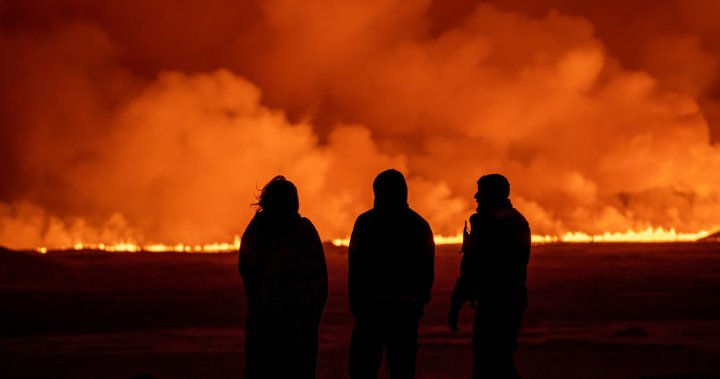
Iceland volcanic eruption: what happened and what’s next?
Global News
Scientists anticipated the eruption of a volcano in southwestern Iceland for weeks. Here is a look at what happened and what may be ahead.
Scientists anticipated the eruption of a volcano in southwestern Iceland for weeks, so when it happened Monday night, it came as no surprise. The region had been active for more than two years and thousands of small earthquakes rattled the area in recent weeks.
Here is a look at what happened and what may be ahead.
It started at about 10:20 p.m. local time Monday north of Grindavik, a fishing town of 3,400 people on the Reykjanes Peninsula. The town is about 50 kilometres southwest of Iceland’s capital, Reykjavik, in an area known broadly as Fagradalsfjall volcano.
First there was a series of small earthquakes. Then lava that’s some 1,200 degrees Celsius began pouring out of a fissure about four kilometres long. The Icelandic Meteorological Office estimated that hundreds of cubic metres of lava per second flowed out in the first two hours of the eruption, though the activity had significantly subsided by Tuesday afternoon.
In short, no. Scientists had expected the eruption for several weeks and in November, authorities evacuated Grindavik after thousands of small earthquakes shook the area for more than two weeks. Scientists said their monitors showed that a corridor of magma, or semi-molten rock, was spreading toward the town and could reach the surface imminently.
The nearby Blue Lagoon geothermal resort, one of Iceland’s best-known tourist attractions, had to close temporarily as a precaution after a magnitude 4.8 earthquake hit the area last month.











